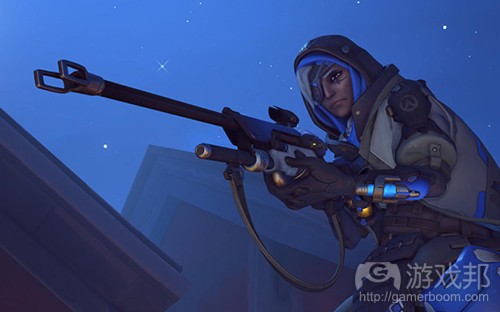第二季《守望先锋》拥有更加强大的竞争模式
作者:JEFF GRUBB
暴雪从不害怕改变游戏,《守望先锋》便是典例。
不久前发行商便发布了这款基于类别的射击游戏的更新内容,并引进了修改过的竞争模式去解决许多与排名有关的问题。结合了《军团要塞》的行动以及《特种部队》的角色的《守望先锋》已经因为休闲快速的游戏模式倍受欢迎了。但其第一季竞争内容其实并不有趣。因为不平衡的Sudden Death规则会随着时间发展提供给一支团队超越其它团队的优势。如此游戏的排名系统便会让玩家在竞争中因为每一次的失败而大大受挫。
暴雪便是通过一些关键性改变去处理这些问题,并且现在的《守望先锋》不仅能够吸引休闲用户的注意,也能吸引那些渴望竞技体验的玩家的注意。
技能等级
在第一季《守望先锋》中,玩家最终将获得1至100的技能等级。而在第二季中,暴雪将这一数值扩展到1至5000,但这只是它用于解决玩家对于等级的看法的一个部分。该工作室同时还引进了从青铜到钻石的等级层,游戏世界中最优秀的玩家可以朝着Master和Grandmaster发展。
这就意味着玩家不需要再用数字去评判自己了。也就是当我玩了10场比赛并最终获得2380的技能等级时,我可以称自己为Gold玩家。我只需要关注于自己即将到达2500分(游戏邦注:即Platinum层面的起点)就可以。
基于这一方法,玩家虽然还会因为在《守望先锋》中失败中感到受挫,但是他们不会再像第一季游戏那样难受了。如此我也能够比之前更长久地挑战游戏的竞争模式了。
有意义的规则
我在《守望先锋》的竞争模式中投入许多时间的另一个原因便是我不会再因为其古怪的Sudden Death规则而崩溃了。因为暴雪删除了这一规则。如今的游戏使用的是一个时间银行系统。
在这一规则中,游戏能在玩家与目标竞争后追踪每一方所花费的时间。如果玩家小组成功推动一个payload通过三个检查点,他们可能会剩下大概2分钟的时间。如果玩家的对手也通过了三个检查点,那么比赛将进入加时赛,在那里双方将使用他们剩下的时间去获取更多分数。而这种随着时间而发展的规则带有许多注意事项和条款从而让它们显得既复杂又直观。
而这些规则其实是传统体育的写照。因为一旦玩家处于规则控制中,他们便会认为不管是哪一方都不会获得不公平的优势。
暴雪同样也将每一回合的长度减少了60秒。这让玩家间的比赛变得更快,并能够避免玩家面对的是一款将经历5个回合的30分钟的控制点游戏。
对退出者的惩罚
在玩了第一季《守望先锋》15次时,成员退出我的团队的几率是1/3。而在玩第二季游戏30多次时,我发现成员退出团队的几率却只有1/10。
暴雪通过结合了禁令和经验值惩罚有效打退了玩家退出游戏的想法。这将会阻止玩家在可能遭遇重复冒犯者时避免与之进行竞争。此外,那些故意退出游戏的玩家将只能获取原本经验点数的1/4。
暴雪同时还规定那些在比赛中离开的玩家将遭受10分钟的禁止惩罚。如果玩家想要再加入其它比赛,他们将收到有关之前退出的信息,或者他们需要回到之前的比赛中将其比完。
期待未来的游戏
我并不关心《守望先锋》的竞争内容。但我觉得快速游戏非常有趣,并且它也未让我再感到郁闷。第二季游戏更是让我开始关心游戏的排名模式。或许我永远都不会走出Gold层,但只要暴雪能够持续维护高水平的竞争体验,我便会一直在此尝试去走得更远。
(本文为游戏邦/gamerboom.com编译,拒绝任何不保留版权的转发,如需转载请联系:游戏邦)
Overwatch’s competitive mode is way better in Season 2
JEFF GRUBB
Blizzard isn’t afraid to make sweeping changes to its games, and Overwatch is a continuing example of why this approach works.
The publisher released an update for its class-based shooter last week, and it introduced a revamped competitive mode that fixes many of the problems with ranked play. Overwatch, which is a modern mashup of the action you’d find in Team Fortress and the characters you’d meet in G.I. Joe, is already popular for its casual, quick play mode. But the first season of competitive wasn’t fun at all. That’s because people who quit a fight early plagued matches and unbalanced Sudden Death overtimes often gave one team an advantage over the other. And through all of this, the ranking system made every loss a painful setback in your climb up the competitive ladder.
Blizzard addressed those problems with several key changes, and now Overwatch should win over both casual audiences and a crowd hungry for an esports-like experience.
A skill rating that feels good
In the first season of Overwatch, you could end up with a skill rating between 1 and 100. For the second season, Blizzard expanded that number from 1 to 5,000, but that’s only part of its solution for fixing the way players feel about their rating. The studio also introduced rank tiers that go from Bronze up to Diamond, moving higher to Master and Grandmaster for the best players in the world.
This means you don’t really think of yourself as a number. I ended my 10 placement matches with a skill rating of 2,380, but I refer to myself as a Gold player. I only pay attention to the number if I get close to 2,500, which is the start of the Platinum tier.
In this method, Overwatch loses still hurt, but they are not nearly as painful as they were in Season 1, when you would lose several ranks after every bad match. Because of this, I can play the competitive mode longer even when I’m in a rut.
Rules that make sense
Another reason that I am putting a lot more time into the Overwatch’s competitive mode is that the weird Sudden Death rules no longer leave me burned after a tough loss. Blizzard dropped Sudden Death for this season. Instead, it has a time-bank system that it uses in all of its game types.
Under these rules, it tracks how long each side has after they compete their objective. If your squad pushes hard, you might have around 2 minutes left on the clock when you push a payload past all three checkpoints. If your opponents also scores all three checkpoints, the match will go into extra rounds, where each side will get to use their remaining time to score more points. The overtime rules have a number of caveats and clauses that make it simultaneously complex and intuitive.
These rules echo traditional sports. Every moment falls under regulation, and that gives you the confidence that neither side has an unfair advantage.
Blizzard also reduced the length of each round by 60 seconds. This makes matches go by much quicker, and it guarantees you likely won’t end up in a 30-minute control-point game that goes all five rounds.
No mercy for quitters
In the 15 or so games I played during Season 1, I had people drop off of my team a third of the time. In the 30 or so games I’ve played for Season 2, I’ve only seen people quit maybe one out of every 10 times — and only once was that someone from my team.
Blizzard is doing a decent job of discouraging players from rage-quitting through a combination of bans and XP penalties. These will block players from playing competitive for certain periods of time that may include the entire season for repeat offenders. Additionally, those who drop out on purpose may earn only a quarter of their experience points for a number of games before returning to good standing.
And Blizzard also added a 10-minute ban for anyone who leaves a match that is in progress. If you try to join another match, you’ll either get a message about rage quitting or you’ll get thrown back into your competitive match to play it out.
Looking forward to future seasons
I didn’t think I would care about competitive play in Overwatch. Quick play was fun, and it didn’t bum me out the way season one did. But season two is so much better that I now find myself primarily booting into the ranked mode. I even occasionally talk to people to ensure better coordination. I’ll probably never get out of the Gold tier, but I’m going to keep trying for as long as Blizzard keeps putting this much effort into maintaining the quality of the competitive experience.(source:venturebeat)
上一篇:如何去寻找游戏设计中的真正乐趣
下一篇:在网上营销游戏必须知晓的5大要点








































 闽公网安备35020302001549号
闽公网安备35020302001549号